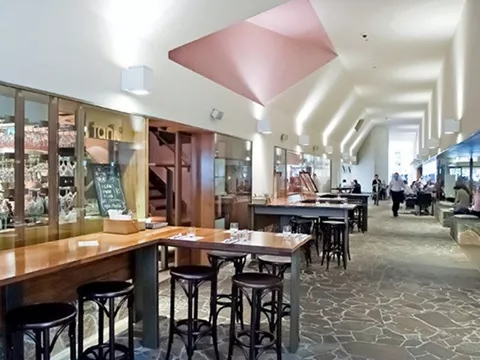
When evaluating office space in 2025, the advertised monthly rent represents just a fraction of the true cost that businesses face. Australian companies navigating traditional office leases encounter a perfect storm of tightening supply, escalating rental rates, and soaring fit-out expenses that can devastate unprepared budgets. Cushman and Wakefield's 2025 Fit-Out Cost Guide reveals the sobering reality: fit-out alone runs approximately $2,665/m² in Sydney and up to $2,998/m² in Canberra. That's before accounting for base rent, cleaning services, or administrative support.
This comprehensive guide dissects the associated costs of traditional office spaces, exposing hidden costs that routinely double projected budgets. We'll examine how conventional office arrangements compare to flexible office solutions like serviced offices and coworking spaces, analyze the impact on small businesses and growing companies, and provide actionable strategies to secure the right office space while protecting your bottom line in increasingly challenging market conditions.
The Starting Line: Base Rent Across Major Australian Cities
Australian CBD rental rates for traditional leases are surging back toward pre-COVID peaks, with supply constraints intensifying competition for quality office locations. Sydney commands the highest premiums for private offices and fixed space, with prime CBD properties approximately costing 1,300/m² annually. Other major cities like Melbourne follows at $600-$1,200/m², while Brisbane and Perth offer relative value at $500-$900/m²—though many businesses find even these prime areas increasingly unaffordable.
The supply crunch particularly impacts small business owners seeking the right workspace for their team size. New construction has plummeted, and industry forecasters predict rents will "return to pre-COVID levels by 2026" as vacancy rates shrink.
Worth noting: These figures represent only base rent. The typical cost for businesses occupying traditional office spaces extends far beyond these already substantial numbers, as we'll explore in detail.
Beyond Rent: The Hidden Costs You Must Know
Unlike managed office arrangements where serviced offices provide transparent, all-inclusive pricing, traditional office leases conceal numerous additional expenses that can cripple business operations. Understanding these hidden costs is essential for making an informed decision about your office strategy.
Outgoings and Operational Expenses
Council rates, building insurance, maintenance, management fees can add 15-30% to your base rent. While co working spaces include these in their pricing, traditional landlords pass through every conceivable expense, from high speed internet installation to Wi-F i maintenance, often with minimal transparency. For a small business paying $100,000 in annual rent, outgoings alone can add $30,000 to the bill.
Common Area Maintenance and Strata Levies
Shared facility costs for lobbies, lifts, parking, and communal areas are notoriously opaque. Unlike coworking spaces where premium amenities are included, Common area maintenance charges in traditional offices fluctuate wildly based on building occupancy and maintenance schedules. These charges make budgeting particularly challenging for smaller teams who still pay their proportional share regardless of actual usage.
Utilities and Service Charges
Electricity, water, cleaning services, and security often appear as vague line items that shock business owners. Serviced offices bundle these into one predictable fee, but traditional leases leave small businesses vulnerable to unexpected spikes. Without clear consumption metrics, tenants frequently overpay for their actual usage, leading to your typical cost trap.
Fit-Out and Office Furniture
The double burden facing businesses is substantial: Fit-out costs now are already exorbitant in Sydney and Melbourne, plus office furniture expenses that can add another $1,000/m² for quality ergonomic solutions. For a 500m² office, that's potentially $1.5 million before operations begin. Then, at lease end, make-good obligations can demand another $500-$1,000/m² to restore the space. Compare this to flexible office solutions where dedicated desks and meeting rooms come fully furnished, it's clear which is the safer bet.
Rent Escalations and Long-Term Commitment
Market-rate adjustments compound annually in long term leases. A seemingly reasonable 4% annual increase transforms a $1,000/m² rent into $1,480/m² over a 10-year lease term—a 48% increase that destroys budgets. Meanwhile, flexible lease terms in serviced offices allow businesses to adapt as their business evolves, scaling up during growth periods or downsizing during contractions without penalty.
Administrative Burden
Traditional office spaces require internal management of reception services, vendor coordination, and facility maintenance - hidden labor costs that managed office solutions eliminate. For small business owners, this administrative load diverts focus from core operations.
Consider the real cost: managing multiple vendor contracts, coordinating repairs, handling cleaning services, and maintaining high speed internet and Wi-Fi Infrastructure. These tasks consume valuable time and resources that flexible workspace solutions handle seamlessly.
Why These Hidden Costs Matter for Modern Businesses
The financial impact on companies is staggering. A business budgeting $100,000 annually for office leases routinely faces $180,000-$200,000 in actual costs once hidden costs surface. This shock particularly devastates small businesses lacking financial buffers, forcing many to reconsider their entire office strategy.
Budget unpredictability in traditional offices can further compound these problems. Variable outgoings, unexpected maintenance fees, and ambiguous markups make accurate forecasting impossible. This can lead to a nightmare when trying to attract top talent who expect modern premium amenities and reliable infrastructure. The inability to accurately predict costs affects everything from pricing strategies to hiring decisions.
Mtigation Strategies
Evaluate Flexible Office Solutions First
Before committing to traditional leases, thoroughly evaluate serviced offices and coworking spaces. These office solutions offer transparent pricing, flexible lease terms, and included amenities that often prove more cost effective despite higher per-square-meter rates. For businesses with 5-50 employees, the total cost frequently favors flexible office solutions when all associated costs are considered.
Serviced offices provide immediate access to meeting rooms, reception services, and premium amenities without capital investment. They're particularly valuable in prime areas where traditional fit-out costs are prohibitive. The networking opportunities in co working spaces add intangible value that traditional office spaces rarely match, creating organic business development possibilities.
Smart Negotiation Tactics
If pursuing a traditional office, engage a tenant advisor before signing anything. Negotiate hard caps on all additional expenses and demand transparency on historical outgoings. Use serviced offices as a benchmark during negotiations—if a managed office can provide all-inclusive pricing, why can't your landlord provide cost certainty?
Right-Size Your Space Requirements
Many companies overestimate space requirements, paying for unused areas that drain resources. With remote workers now common, consider hybrid models combining smaller private offices with hot-desking arrangements. This approach, standard in coworking spaces, can reduce costs by a significant amount while maintaining professional presence.
Location Strategy Optimization
While a prestigious address appeals to many, consider whether public transport access and vibrant communities in suburban co working spaces might better serve your needs. Key factors include employee commute times, client accessibility, and whether the location truly impacts business operations or merely satisfies vanity.
Benchmark Against Flexible Alternatives
Compare traditional office total costs against serviced offices comprehensively. Factor in meeting rooms, reception services, cleaning services, administrative support, and the flexibility to accommodate business growth. Include soft costs like time spent managing facilities and the opportunity cost of capital tied up in fit-outs.
Making an Informed Decision
The choice between traditional office leases and flexible workspace solutions depends on multiple key factors specific to your business needs. Established companies with stable operations and 100+ employees might justify traditional leases if they can negotiate favorable lease terms and have capital for fit-outs. However, small businesses, startups, and growing companies typically find better value in flexible office solutions.
Consider your growth trajectory: Will your team size double in two years? Will you need different space configurations as your business evolves? Do you value the networking opportunities and community of coworking spaces? These questions matter more than simple cost comparisons.
To Calculate Your Costs
The true cost of traditional office spaces in 2025 extends far beyond advertised rent. Additional expenses, rigid lease terms, and massive capital requirements often make traditional leases a poor choice for modern businesses.
For small business owners and growing enterprises, the equation is clear: The hidden costs and inflexibility of conventional office arrangements rarely justify their perceived prestige. Flexible office solutions provide everything from high speed internet to meeting rooms in transparent monthly rent packages, enabling focus on what matters - growing your business.
Frequently Asked Questions






